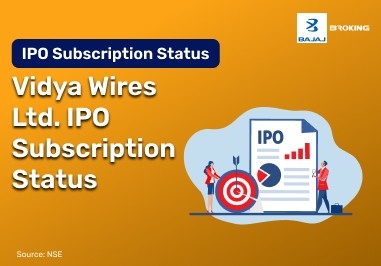In futures and options (F&O) trading, margin requirements are critical to managing risk and maintaining discipline. Two primary components make up the total margin: SPAN margin and exposure margin. Understanding the distinction between them is essential for any Indian trader engaging in derivatives. The SPAN margin is designed to cover the worst possible losses based on historical volatility, while the exposure margin is an additional buffer mandated by SEBI to account for unpredictable market movements. By knowing how these margins function, you can better assess your capital requirements and avoid margin shortfalls during high volatility.
What is SPAN margin?
SPAN (Standard Portfolio Analysis of Risk) margin is the minimum margin amount that you must maintain when trading futures and options contracts. It is a risk-based margining system used by exchanges like NSE and BSE, developed by the Chicago Mercantile Exchange. The primary objective is to determine the maximum potential loss that a portfolio can incur over a single trading day, under various simulated market conditions.
The SPAN margin takes into account the type of contract, price movement, strike price, expiry date, and implied volatility. This system runs multiple scenarios, including upward and downward market movements, and uses the worst-case loss figure to calculate the minimum margin requirement.
You must deposit this amount before entering any F&O trade. It is recalculated daily based on price volatility and changes in your position. Since it reflects the actual risk in a position, SPAN margin varies from one instrument to another and depends on portfolio composition. It ensures that sufficient funds are available to cover expected losses, offering protection to both the trader and the exchange during sharp market movements.
What is exposure margin?
The exposure margin is an additional margin collected over and above the SPAN margin. While SPAN margin is based on risk analysis, exposure margin acts as a fixed buffer to cover unforeseen market movements. This component is intended to mitigate potential systemic risks that may not be captured by volatility-based models alone.
In the Indian market, SEBI mandates exposure margins to ensure brokers and traders hold sufficient capital in high-stakes situations. The amount is calculated as a percentage of the contract value. For index futures, it is typically 3%, and for stock futures, it ranges between 5% and 7.5% of the total contract value. This amount is deducted from your available margin when you take a position.
You are required to maintain this margin in your account throughout the life of the trade. It does not change daily like SPAN margin unless the position value itself changes. Exposure margin safeguards the system against large losses during sudden or unpredicted price swings, complementing the SPAN margin and contributing to overall market stability.
SPAN margin vs exposure margin: Key differences
Understanding the key differences between SPAN margin and exposure margin is essential for managing capital effectively in F&O trading. The table below outlines the fundamental distinctions between the two, helping you assess your total margin requirements accurately.
Basis of comparison
| SPAN margin
| Exposure margin
|
Definition
| Risk-based minimum margin calculated using scenarios
| Additional fixed margin collected as a buffer
|
Purpose
| To cover the maximum potential loss from market movement
| To safeguard against unanticipated market volatility
|
Calculation method
| Based on worst-case loss simulation using SPAN software
| A fixed percentage of the contract value
|
Mandated by
| Exchange (NSE/BSE) using SPAN system
| SEBI (Securities and Exchange Board of India)
|
Volatility sensitivity
| Highly sensitive to market volatility and positions
| Not linked to volatility; acts as a constant reserve
|
Margin variation
| Recalculated daily based on market dynamics
| Remains constant unless position size changes
|
Applicability
| Applies to all F&O positions
| Applies to all F&O positions
|
Adjustment frequency
| Daily
| Generally constant unless SEBI guidelines change
|
Risk coverage
| Covers predicted risk from known scenarios
| Covers residual risk from unknown or rare events
|
Combined usage
| Forms the total margin along with exposure margin
| Complements SPAN margin to complete total requirement
|
How to calculate SPAN and exposure margins
Calculating span margin and exposure margin is essential to understand how much capital you need to maintain your open derivative positions. Exchanges use a specific risk engine for SPAN margin, while exposure margin is based on predefined percentages. Together, they represent your total margin obligation.
SPAN margin is calculated using software that runs multiple market simulations for your F&O portfolio. It evaluates different scenarios such as changes in price, volatility, and time to expiry. The scenario with the highest potential loss becomes the SPAN margin requirement.
Exposure margin, on the other hand, is simpler to compute. For index futures, it is generally 3% of the contract value. For stock futures, it can be between 5% and 7.5%. The formula is:
Exposure Margin = % x Lot Size x Market Price of the contract
You can use online margin calculators provided by brokers like Zerodha or Angel One to get an estimated margin requirement. However, remember that margin requirements may change if SEBI or exchanges revise the percentages or calculation methodology. Keeping track of your SPAN and exposure margin can help you avoid penalties and forced square-offs due to insufficient funds.
Conclusion
Understanding span margin and exposure margin is vital if you are involved in futures and options trading in India. These two margin components collectively determine how much capital you need to allocate for maintaining open derivative positions. The SPAN margin accounts for market volatility and predicts the maximum potential loss, while the exposure margin serves as a static buffer to account for unanticipated price movements and systemic risk.
Both margins are mandatory and regulated by SEBI and exchanges. When you initiate a position, your broker debits both margins from your account, ensuring adequate risk protection for both you and the financial system. These margins work together to maintain liquidity, reduce counterparty risk, and prevent sudden defaults, especially in highly volatile market conditions.
If you are trading actively, keeping track of margin requirements is crucial. Using broker-provided tools to estimate SPAN and exposure margin in advance can help you avoid margin shortfalls or forced liquidation. A disciplined understanding of margin dynamics contributes not only to capital efficiency but also to long-term trading sustainability.














